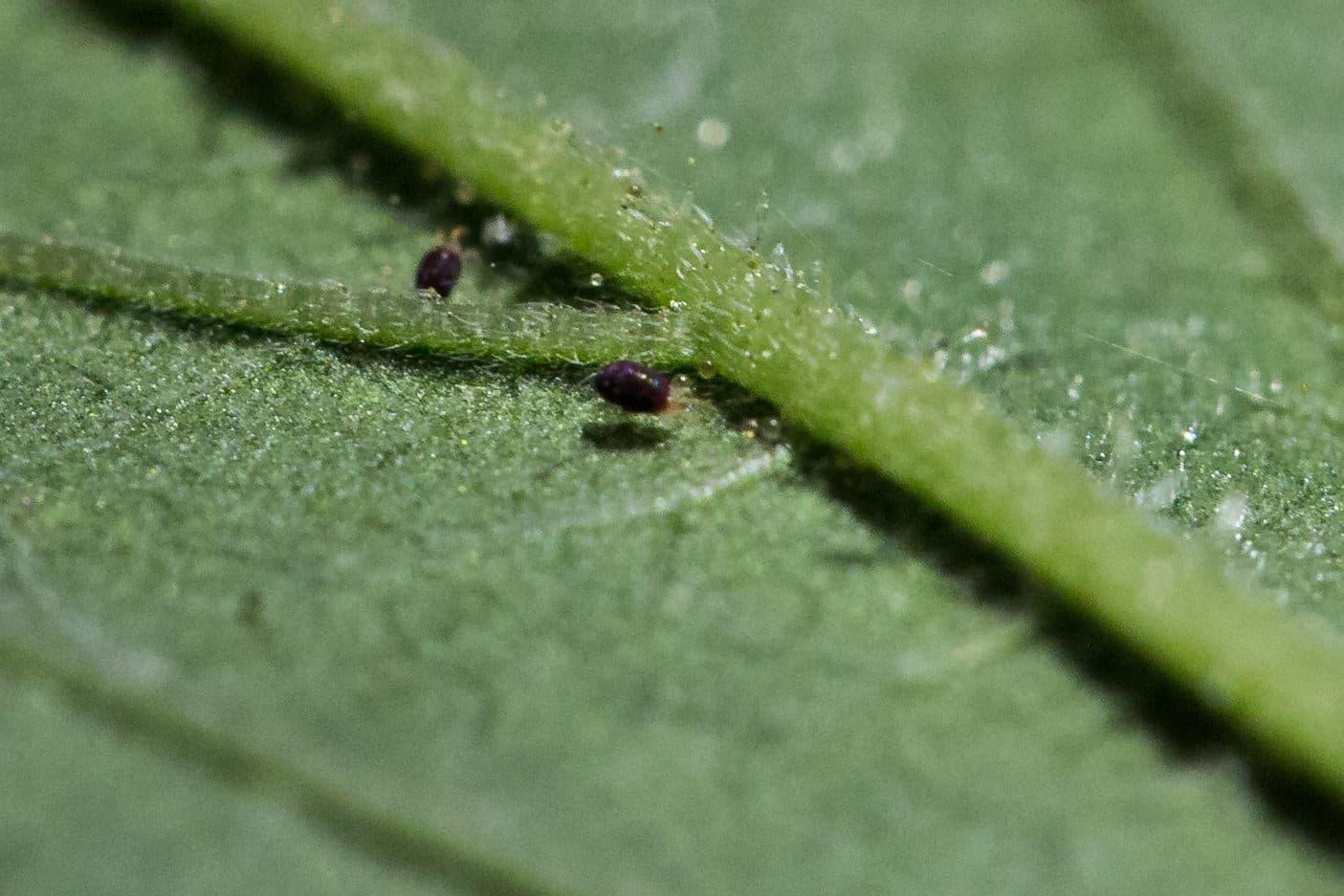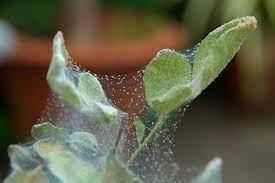Do you have spider mites on your indoor plants? If so, you’re not alone. Many people struggle with spider mites, and they can be difficult to get rid of. In this blog post, we’ll explore where spider mites come from and how to get rid of them.
Spider mites are tiny pests that can infest indoor plants and cause a lot of damage. If you’ve ever found spider mites on your plants, you may be wondering where they came from.

There are a few ways that spider mites can find their way into your home. They can come in on new plants that you bring home from the store, or they can hitch a ride on your clothes or shoes if you’ve been outside around infested plants. Once they’re inside, they can reproduce quickly and spread to other plants in your home.
If you think you may have spider mites, it’s important to take action quickly to get rid of them. Otherwise, they can cause a heavy infestation to your plants.
Introduction
As you may already know, spider mites are tiny pests that can infest your indoor plants. But where do they come from?
There are two main ways that spider mites can end up on your plants. The first is if you bring an infested plant into your home. The second is if spider mites are already present in your home and find their way onto your plants.
If you bring an infested plant into your home, it’s important to quarantine it away from your other plants. This will help prevent the spider mites from spreading.
If spider mites are already present in your home, they can be difficult to get rid of. They can hide in cracks and crevices, and they reproduce quickly. The best way to prevent them from infesting your plants is to keep your home clean and free of clutter. Regular vacuuming and dusting can help.
What Are Spider Mites?
Spider mites are tiny arachnids that infest plants. They are less than 1/20 of an inch long and are barely visible to the naked eye. These tick-like bugs are smaller than the head of a pin, making them difficult to spot. They are most commonly found in warm, dry climates.
Spider mites feed on plant sap, which can cause leaves to turn yellow or brown and eventually drop off. They also produce webbing that can cover leaves and impede photosynthesis.
There are many different species of spider mites, but the two-spotted spider mite (Tetranychus urticae) is the most common. The two-spotted spider mite gets its name from the two dark spots on its back.
Spider mites are difficult to control once they infest a plant. They reproduce quickly and can quickly build up resistance to pesticides. A heavy infestation of these species can kill a plant. The best way to prevent an infestation is to keep plants healthy and free of stress.
Where Do Spider Mites Come From?
Most spider mites are found outdoors, in gardens or fields. They can also be found on indoor plants, where they are a serious pest. Spider mites are very small, and most are barely visible to the naked eye. They are usually red, brown, or black.
Spider mites get their name from the way they spin webs. They use these webs to protect themselves and their eggs. The webs also help them to travel from plant to plant.

Spider mites are harmful to plants because they suck the sap from the leaves. This damages the leaves and can eventually kill the plant. Spider mites can also spread diseases from plant to plant.
There are many ways to control spider mites. You can remove them by hand, or use a vacuum cleaner. You can also use chemicals, but be careful not to damage the plants.
So, spider mites come from gardens, fields, and other places where plants are found. They are very small, and most are barely visible.
How Do Spider Mites Get On Indoor Plants?
Ways spider mites can get onto your indoor plants can vary. Store-bought plants might have gotten spider mites while sitting on shelves with other plants, or they can be brought in by other pests like aphids or whiteflies. Once they’re in your home, they can spread from plant to plant by crawling or by traveling by webs.
Spider mites are very small, so they can fit through tiny cracks and openings. They can also survive for a long time without food, so they can be difficult to get rid of once they’ve infested your plants. If you think you have spider mites, it’s important to act quickly to prevent them from spreading.
How Can You Prevent Spider Mites From Infesting Your Plants?
There are a few things you can do to prevent spider mites from infesting your plants;
First, make sure to keep your plants clean. Spider mites like to live in dirty, dusty environments. So, regularly wipe down your plants with a damp cloth to remove any dust or dirt.
Second, make sure to keep your plants well-watered. Spider mites like to live in dry, arid conditions. So, by keeping your plants well-watered, you’ll create an environment that spider mites don’t like.

Third, consider using a natural insecticide. There are a number of natural insecticides that are effective against spider mites. Neem oil is one such insecticide. You can find it at most garden stores.
Fourth, consider using a miticide. A miticide is a pesticide that is specifically designed to kill spider mites. There are a number of different miticides on the market. Just be sure to read the label carefully to make sure it is safe to use on the plant you want to treat.
By following these simple tips, you can prevent spider mites from infesting your plants.
How To Get Rid Of Spider Mites
If you have spider mites, the first thing you need to do is figure out where they’re coming from. If you have indoor plants, they could be coming from outside. Check your plants for signs of spider mites and if you see any, quarantine the plant.
Once you’ve found the source of the spider mites, you need to take action to get rid of them. The best way to do this is to use a pesticide. There are many different pesticides available, so be sure to read the labels carefully to find one that is effective against spider mites.
Another way to get rid of spider mites is to use a natural predator. One type of predator that is effective against spider mites is the ladybug. You can purchase ladybugs online or at a garden center. Be sure to release them in the evening so they have time to find the spider mites.
You also need to take steps to prevent spider mites from coming back. Be sure to keep your plants clean and free of debris. Remove any dead leaves or flowers. And keep an eye out for signs of spider mites so you can take action quickly if they return.
Quick Tips
- Check your plants regularly for spider mites. They are tiny, spider-like creatures that can be difficult to spot.
- If you see any webbing on your plants, that’s a sure sign of spider mites.
- These pests are often brought inside on new plants or on cuttings from infested plants.
- Once spider mites get established on indoor plants, they can be difficult to get rid of.
- Be sure to quarantine any new plants before introducing them to your indoor garden.
- If you do find spider mites, there are a few things you can do to get rid of them. You can try spraying them with water or insecticidal soap, or you can introduce beneficial predators like ladybugs or green lacewings.
- Prevention is the best defense against spider mites, so be sure to check your plants regularly and take steps to keep them healthy.
Conclusion
In conclusion, spider mites are most likely to come from other indoor plants. They can also come from outside but are less likely to do so. The best way to prevent spider mites is to keep your indoor plants away from any potential sources of infestation, like outdoor plants or other infested indoor plants. If you have an indoor plant that has spider mites, it is important to take action to remove them as soon as possible.
What are your thoughts on dealing with spider mites? Do comment in the box below. Would love to hear from you!
Where Do Spider Mites Come From On Indoor Plants
Michelle Wilde
Related posts
10 Comments
Leave a Reply Cancel reply
![]()
About Michelle Wilde
Michelle Wilde is a stay-at-home mom and avid plant lover. Armed with a post-graduate degree in Computer Science (no kidding!), she loves researching plants and landscapes. When she is not caring for her 4 kids, she spends time on her passion for plants. She blogs at www.indoorplantschannel.com, the trusted source for indoor plants.
Learn more
Subscribe
* You will receive the latest posts and updates about indoor plants!
Search
Recent Posts
Categories
- Beginner Guides (10)
- FAQ (206)
- General (2)
- How-To Guides (212)
- Indoor Plants (214)
- Pest Management (2)
- Plant Problem Solutions (4)
- Seasonal Growing (2)
- Specialized Environments (2)
- Specific Plant Care (3)
- Technical Growing (2)
Spider mites are such a pain! I was wondering if there’s anything I can do to prevent them from coming back once I get rid of them.
Ugh, I hate finding spider mites on my plants! Does anyone have any tips for getting rid of them?
I never knew that spider mites could come from indoor plants! I always thought they were only outdoor pests.
I never knew spider mites could be such a problem. I’m going to have to be more careful about keeping my plants healthy from now on.
I had no idea spider mites could be such a problem for indoor plants! I’m going to have to be extra careful to keep an eye out for them now.
I’ve been thinking about getting some plants for my apartment, but now I’m worried about spider mites. Do you think it’s worth the risk?
[…] you want to get rid of spider mites for good, you need to know these simple […]
[…] them away from your home. In this blog post, we’ll share with you some of the best methods to keep spider mites away for good. So if you’re ready to get rid of those pesky critters, read […]
[…] you have small, red, spider-like creatures crawling on your indoor plants, then you may have a clover mite infestation. Clover mites are very tiny, only about 1/30 of an […]
[…] Mites are small, spider-like creatures that are closely related to ticks and spiders. There are many different species of mites, and some of them are predators of other mite species, including clover mites. One example of a predatory mite is the Phytoseiulus persimilis, which is commonly used in commercial greenhouses to control spider mites. […]